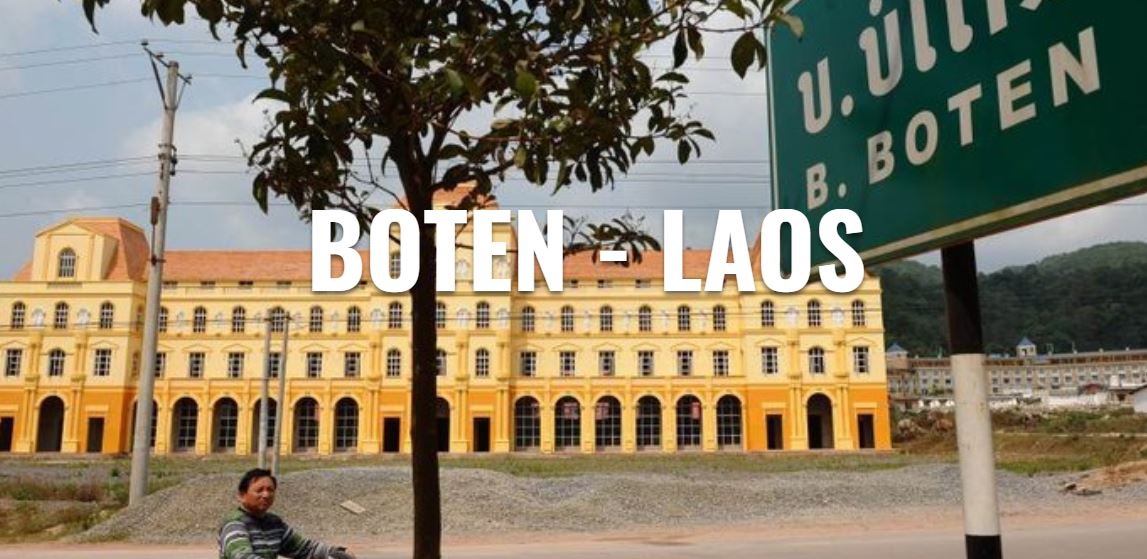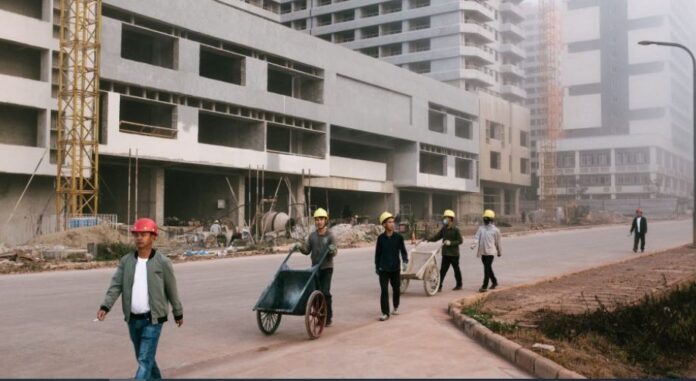One of the largest infrastructure investments in Laos, the Boten Special Economic Zone (SEZ) or ‘Boten Beautiful Land’, is a 10-billion-USD Chinese-built and funded zone
One of the largest infrastructure investments in Laos, the Boten Special Economic Zone (SEZ) or ‘Boten Beautiful Land’, is a 10-billion-USD Chinese-built and funded zone. The story of this border-town SEZ is a case of boom to bust—and perhaps boom again. The Lao Government first designated it an SEZ in 2003. After a notorious period as a casino outpost (2007–11), Boten was shut and much of the population vacated the zone. With the Belt and Road Initiative (BRI) and the construction of the Laos–China Railway, Boten’s strategic location has been seized on as an investment opportunity. Under a new Chinese developer, the SEZ is currently being refashioned into an urban and tourism centre, as well as a trade and logistics hub.
Project Impacts
- Employment and Labour: During Boten’s first iteration as the Golden City (2007–11), local employment decreased as workers cited abuse by bosses and discrimination. […]
- Trade and Economic Development: Within the zone, the purposes of the international business and finance clusters are to enhance standardisation of international trade procedures, establish a regional commodity distribution centre that influences surrounding areas, build an advanced financial system, and set up an international trade platform serving Laos, China, and other ASEAN countries. According to interviews with Haicheng’s leadership, Boten SEZ will help strengthen economic and trade relations between China and Laos, with hopes of promoting both prosperity and stability at the border. […]
- Customs and Taxes: State revenue generation through taxes and investment is a critical motivation for the Lao Government to promote SEZs, and Boten is no different. However, a Haicheng official noted in an interview in 2019 that customs and tax collection were a central challenge. […]
- Environment: Before the development of the SEZ, Boten was covered by lush, dense forest. […]
- Land and Local Community: The original village of Boten was moved before SEZ construction began in 2003. Residents were first relocated in 1995–96 by the Namtha District authorities, who established a commercial zone along the main highway to foster small-scale trade with China. The residents, houses, and businesses were relocated away from the commercial street. […]
- Fiscal Impact: While many large-scale Chinese state-backed projects in Laos carry with them questions related to debt, the Boten project is privately developed and financed. The Lao Government does not have financial responsibility for the project and it is not included in the national debt portfolio. A branch of the Lao China Bank was opened in the zone in 2017.
- Sovereignty: In 2010, a Lao employee in Boten told anthropologists Chris Lyttleton and Pál Nyíri ‘in fluent Chinese’ that Boten is ‘China now; China rented it’. […]
- Governance: […] The author learned in an interview with an official at the Lao MPI in 2018 that, as the sole developer, Haicheng Group submits a monthly report to the Chinese Embassy in Laos, informing it of progress, follow-up work, problems, and support needed from the embassy or actors in China. Beyond national defence and foreign affairs at the border, the Lao Government delegated authority to the committee, allowing the company to operate with a high degree of autonomy.
- Wildlife Trade: The illegal trade in wildlife is notorious in border areas within the Mekong region such as Boten, and includes parts from tigers, bears, and pangolins. […]
- https://www.business-humanrights.org/en/latest-news/laos-boten-special-economic-zoneboten-beautiful-land/
THE DIPLOMAT
A thick morning mist covers the empty buildings as Lao workers lazily walk towards construction sites and Chinese businessmen, waiting for noodle soup, frantically shout into their mobile phone. “In ten years, 300,000 people will live here, they are going to build a hospital and an international school,” says Suk, 35, a Lao restaurant owner who moved to Boten after COVID-19 made him jobless in March 2020. Suk speaks perfect English and used to manage personnel in a hotel in Luang Prabang. He is learning Chinese, his daughter will soon go to school, and his restaurant is packed every evening with Chinese and Lao construction workers. Boten, a rural village counting a few hundred inhabitants less than twenty years ago, is shaping up as China’s gateway to Laos and Southeast Asia.
Located in Luang Namtha province, in the far north of Laos, Boten lies on the border with China and since the 1990s has been an official border crossing between the two countries. Dramatic development began in 2003, when the area was designated a Special Economic Zone (SEZ) and the Lao government signed a 30-year lease on 1,640 hectares of land with a Chinese developer who invested $500 million. To leave space for the SEZ, the whole village of Boten was relocated twenty kilometers away in a settlement area called New Boten. The SEZ, which focused on casinos and hotels, was named Boten Golden City, which ran on Beijing time and sought to attract gamblers from China and Thailand.
In a short time, the city built a bad reputation due to violence, murder and suicide of people unable to pay off their debts to the Chinese casino concessionaires. The Lao government, backed by China, then decided to shut down the main casinos in 2011. The main investors fled, and sent Boten through a few years of economic uncertainty. Only with the rise of the Belt and Road Initiative (BRI), and consequent construction of the Laos-China Railway did money start flowing into Boten once again. The SEZ agreement was revised in 2012: Boten would become the first stop of the planned Laos-China Railway, the country’s first substantial railway line, and an important logistics and economic hub.
Following years of planning and negotiations, the town’s reconstruction begun in 2016. The Haicheng group, a Yunnan-based developer, says it plans to invest $10 billion to transform the former “Golden City” into what it describes as the “Boten Beautiful Land Specific Economic Zone.” The developers estimate that 300,000 people will live in Boten by 2035. The city is meant to be modern, futuristic, and, to avoid the problems of its earlier counterpart, casino-free: high-rise apartments, luxurious hotels, shopping malls are being built in what is going to be the central business district of town. In the periphery, Haicheng Group plans to partly reproduce the peaceful Lao village that Boten was before the SEZ construction, aiming at attracting Chinese tourists interested in experiencing authentic “Lao village life.”
Nicholas Bosoni
Nicholas Bosoni is an Italian documentary photographer based in Vientiane, Lao PDR. With a background in international development studies and economics, his work focuses on social and environmental issues in transitional countries. You can visit his website here.
https://thediplomat.com/2021/05/boten-the-renaissance-of-laoss-golden-city/




